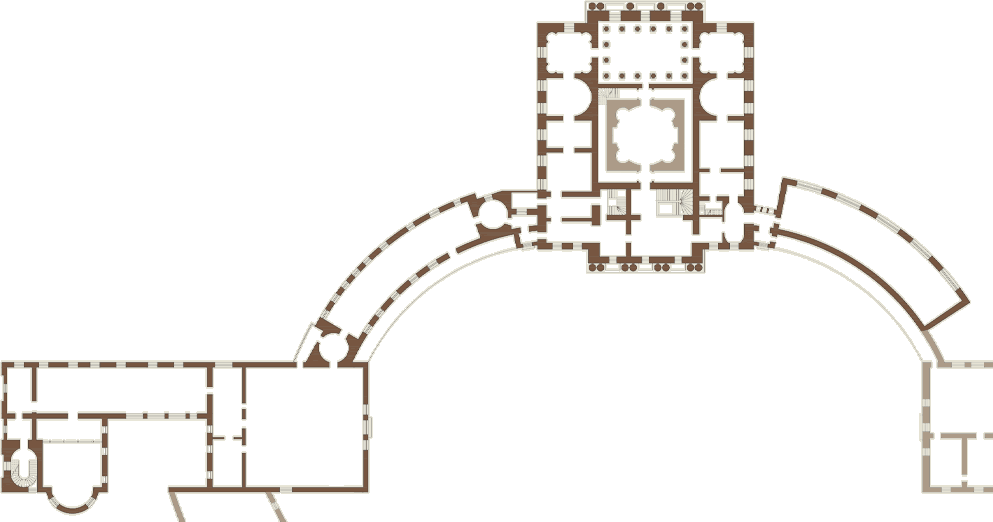The First Interconnecting Study
Загрузка панорамы...
The interconnecting studies appeared in the State Rooms of the palace during the period when the architect Vincenzo Brenna worked on expanding the palace and turning it into an imperial residence in 1797–1799. These elegantly decorated offices serve as a smooth transition from the central building of the palace to the semicircular Picture Gallery and then to the great hall of the Southern Square Building. Brenna solved the complex construction problem of connecting the semicircular volume of the new extension with square architectural volumes very skillfully.
The First Interconnecting Study, being the link between the Central Building and the southern wing, has a complex and asymmetrical layout. It is divided into two parts by an arch with slopes of different widths. The walls of the study are smoothly plastered, painted in a delicate pistachio color, and decorated with bas-reliefs and decorative modeling. Three oval allegorical bas-reliefs with figures of cupids standing at the altars are repetitions of medallions from the walls of the Old Greenhouse in the Lazenka estate near Warsaw, where Brenna worked before arriving in Pavlovsk. On the axis with the Maid of Honour's Room and the Upper Vestibule, there is a colored marble fireplace with a mirror in an elegant gilded frame. On it, stand four vases made by the Berlin Royal Manufactory, with portraits of ancient philosophers, and a central vase made by the Ludwigsburg porcelain factory, a gift from Charles Eugene, Duke of Württemberg, to his niece Maria Feodorovna. Since 1803, two bronze sculptural groups of Alessandro Algardi, the outstanding Italian master of the 17th century, have been located in the study: Jupiter Defeating the Titans and Juno Commanding the Winds.
In the mahogany display cabinet, you can see a collection of porcelain cups of Russian and European work, and in another part of the Study, there is an elegant study escritoire, the doors of which are decorated with picturesque inserts by Angelica Kauffman. The glass lantern with a crystal decor and gilded bronze trim is a characteristic example of Russian lighting devices of the late 18th century.
The First Interconnecting Study on the floor plane
- The Egyptian Vestibule
- The Carpet Study
- The Second Interconnecting Study
- The Main Staircase
- The Hall of War
- The Picture Gallery
- The Upper Vestibule
- The Greek Hall
- The Third Interconnecting Study
- The Italian Hall
- The Hall of Peace
- The Throne Room
- The Valet de Chambre Room of Paul I
- The Library of Empress Maria Feodorovna
- The Pantry
- The Dressing Room of Paul I
- The Boudoir
- The Orchestral Room
- The Rossi Study
- The State Bedroom
- The Knights Room
- The Rossi Library
- The Dressing Room of Maria Feodorovna
- The Chevalier Guard Room
- The Small Study of Emperor Paul I
- The Maid of Honour's Room
- The Anteroom (Turkish Room)
- The State Library of Paul I
- The First Interconnecting Study
- The Palace Church

Back
